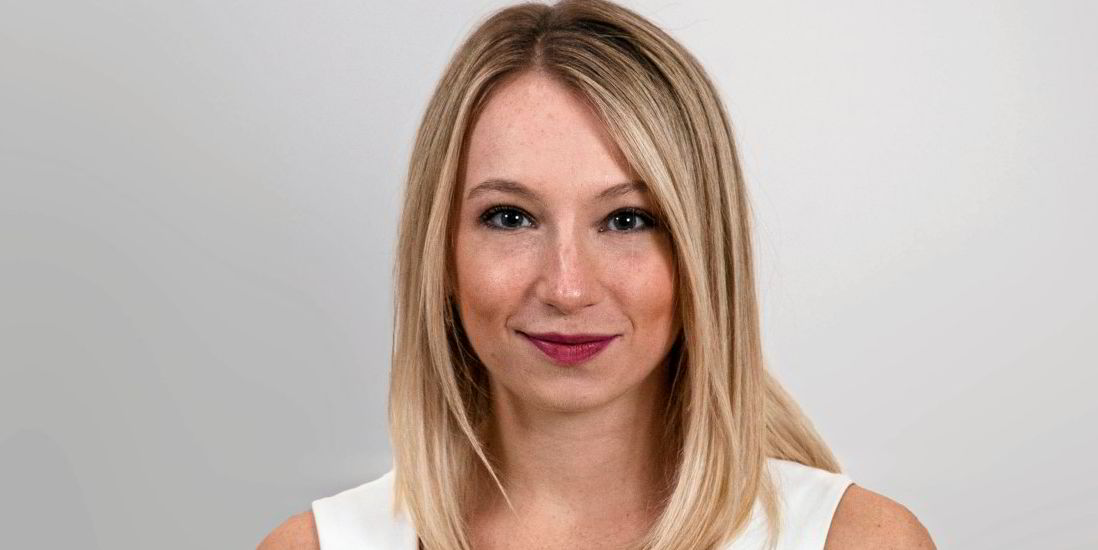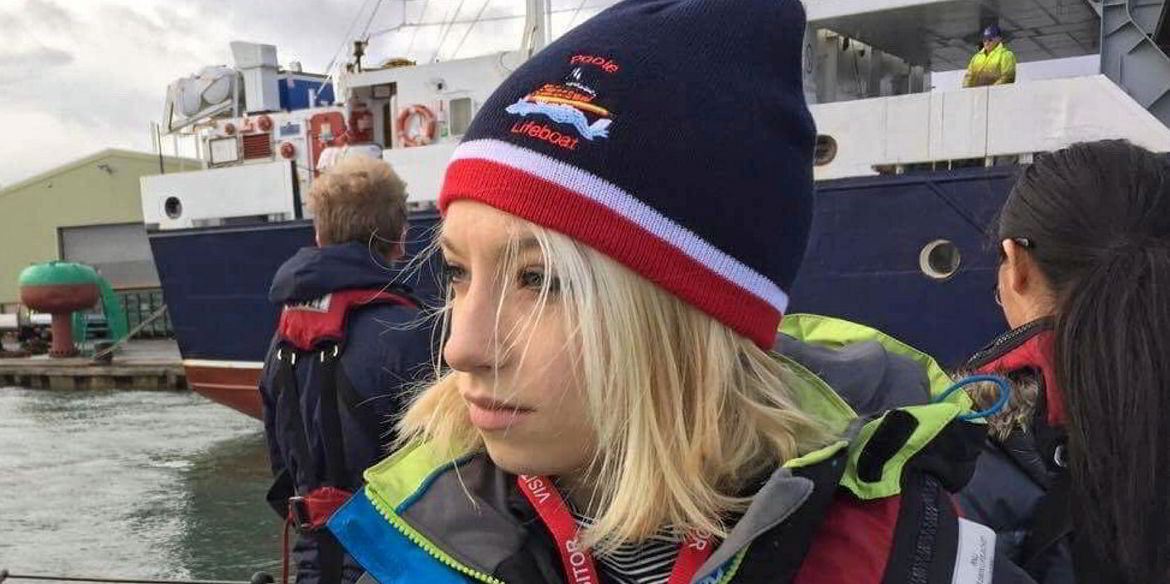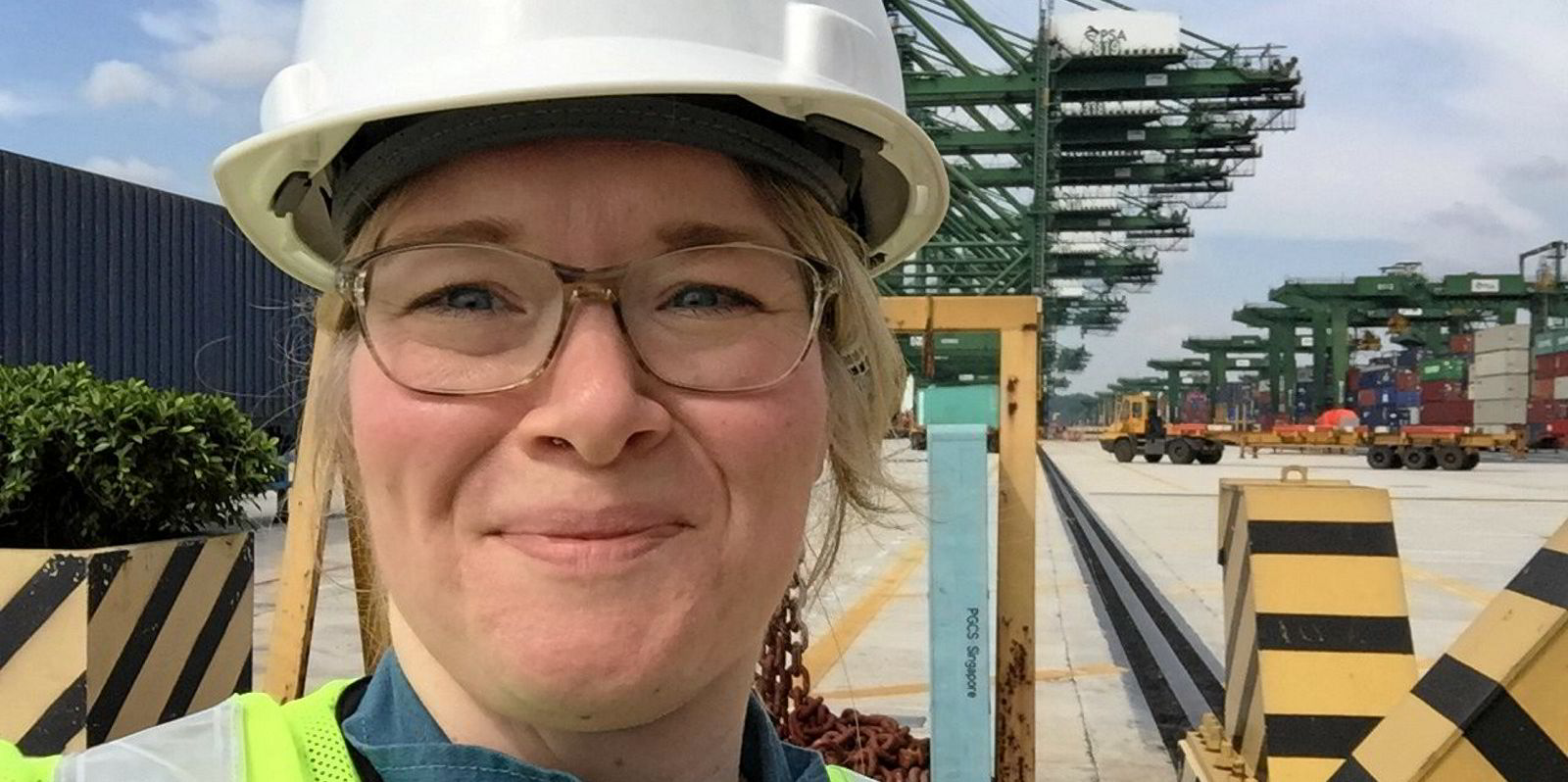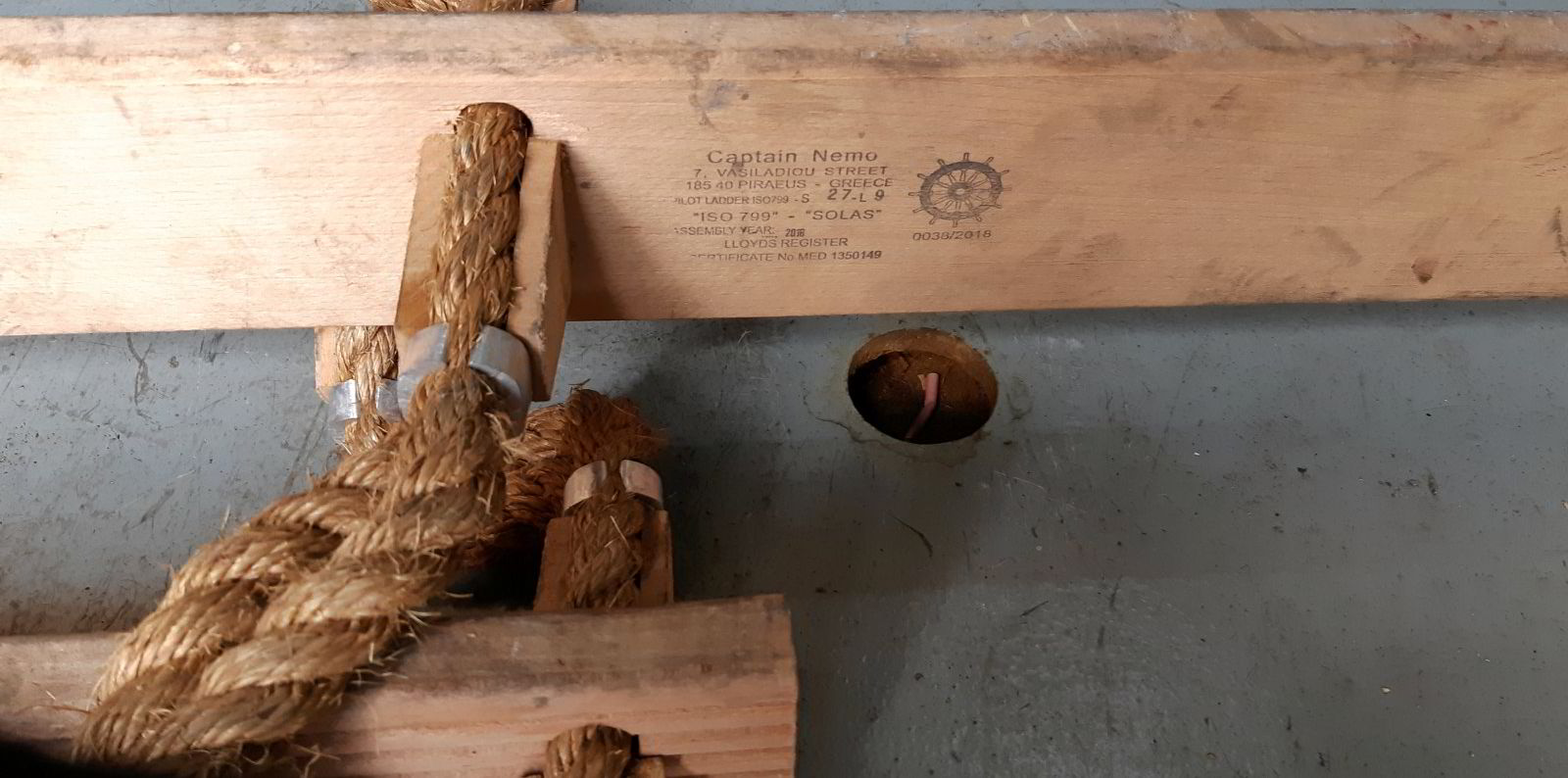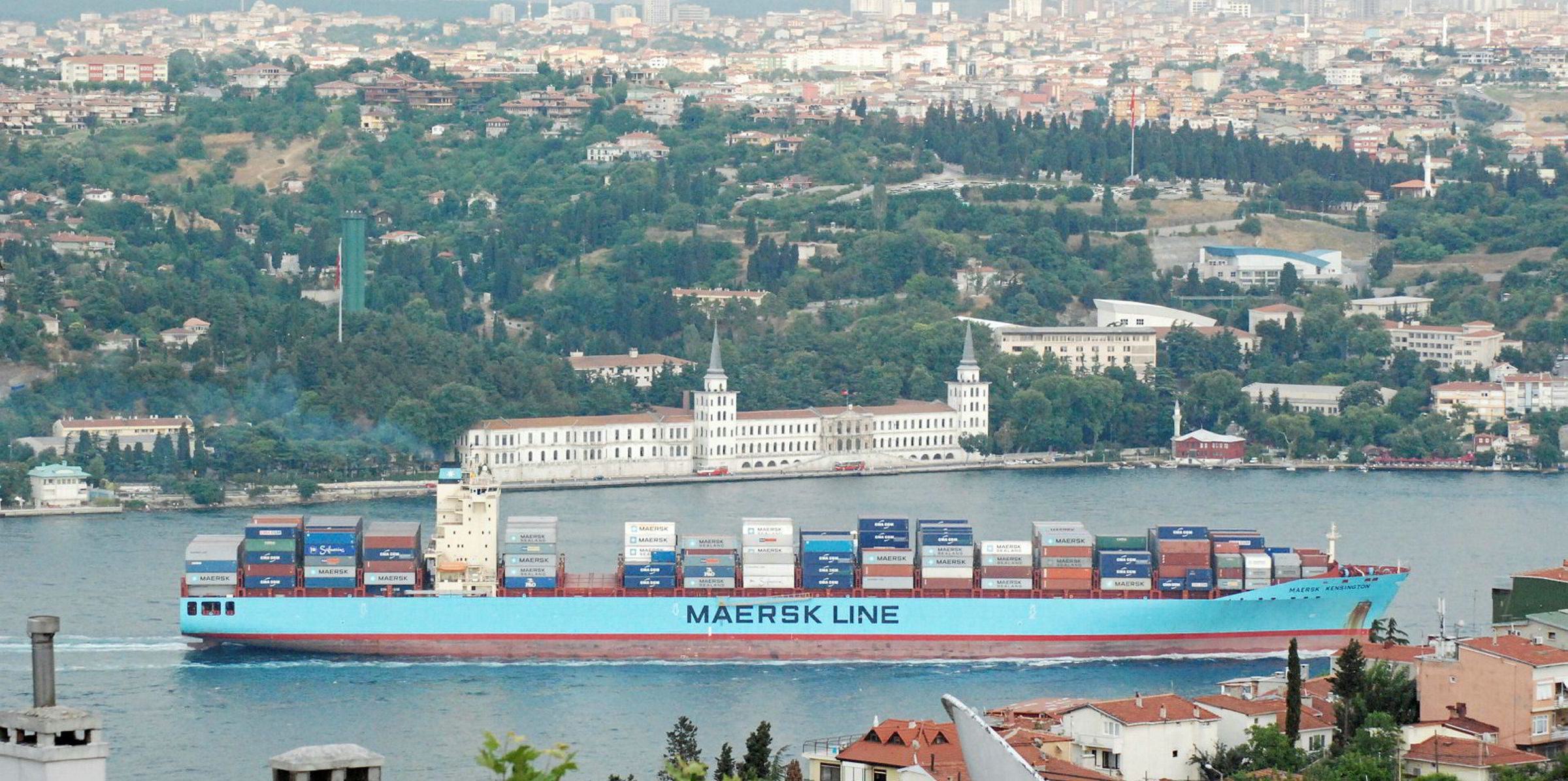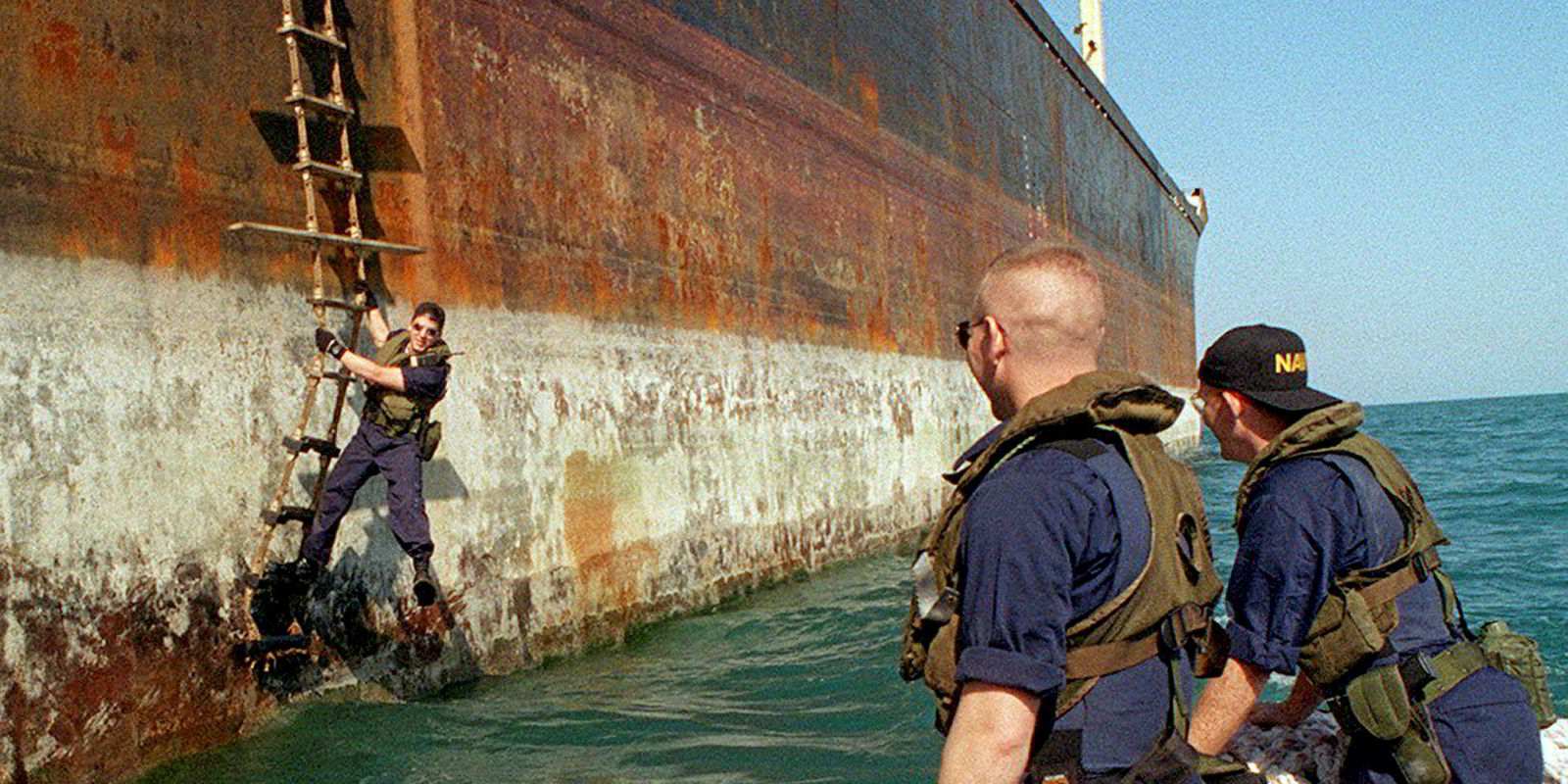An award-winning designer has turned herself into one of the youngest chief executives in shipping.
After graduating from the UK’s Royal College of Art (RCA) in 2018, Madelaine Dowd launched Helm Innovation to focus on life-saving equipment at sea.
The 25-year-old from Hertfordshire, southern England, is patenting a new pilot ladder system that it is claimed reduces safety risks in a ship-to-ship transfer by 80%.
“We could be saving lives with a product,” Dowd told TradeWinds. “My ambition and passion in life is to provide safety through design, and this seems like an opportunity to have an impact.”
Helm’s first product combines two designs by Dowd and fellow students that won a Lloyd’s Register Foundation contest in 2017 for their innovation and potential for risk reduction.
Set to be certified by the Lloyd’s Register class society, the Embark system involves a one-piece rope ladder designed to have limited swing and a cross-lock system that can securely fix the ladder in place.
Dowd’s company aims to complete the certification process by the end of summer before finding ways to produce and market the ladder, possibly with external business partners.
“We are not setting anything in stone right now,” she said. “We [will] take the best route for this product so that it can be of the highest safety standards.”
Dowd said her passion to reduce casualty numbers runs in her blood, with her grandmother, mother and sister all nurses.
“I’m not set for working in hospitals personally, but I still want to follow their footsteps and help people,” she said.
The executive admitted that getting into shipping was not in her original career plan, as she had an ambition to become an architect from a young age.
After doing work experience in some architect firms, Dowd entered the University of the Arts London to study interior and spatial design in 2013.
Sustainable solution

She had her first taste of maritime relief work on a school trip to Japan in 2015, when Atlantic Pacific was developing lifeboat services there.
The charity aims to provide essential facilities of a lifeboat station in a transportable, container-like unit, designed to bring immediate relief to any place prone to flooding.
“This idea just fascinated me,” Dowd said. “It was where design solutions and innovative thinking came together to provide a sustainable solution to a really, really big problem.
“It inspired me to look beyond architecture and buildings, and look at something that can actually affect people’s lives for the better in a bigger picture.”
Later, she decided to continue her research on disaster relief via the RCA’s course on information experience design.
Lloyd’s Register Foundation, as part of the master’s programme, invited Dowd and her collaborators to bring new design solutions to enhance safety at sea and on rivers.
“I think the hardest part for me has been learning a whole new industry,” she said. “The maritime industry is like a whole new language.”
Two teams eventually won in the contest: one was recognised for an innovative ladder design, and Dowd’s for its rigging mechanism.
When she was about to complete the course, her fellow students asked her to bring those two designs together to create an actual product that could be used by the global merchant fleet.
“It was a real opportunity to create an even better product to reduce risk even further,” Dowd said. “I didn’t want to let it slip and miss an opportunity to do something for an industry that can sometimes go unrecognised.”
She established Helm with a team of three — and it was not the easiest decision financially.
The foundation gave her £10,000 ($13,700) in prize money, and she recently won the government-sponsored Young Innovators Award that came with a £5,000 grant. She is using these sums and personal assets to bankroll the venture.
“We’re still looking to raise further funds,” she said. “We have aimed to look at grants to be able to put less pressure on the company.”
As an entrepreneur, Dowd was often ignored at industry events due to her gender and age. But she stressed that many experts at the Port of London Authority and trade groups were willing to give input to her project.
“The people that did give me attention ... would shake my hand and be like, ‘Oh, congratulations’. Those conversations with those people are where the excitement starts.”
